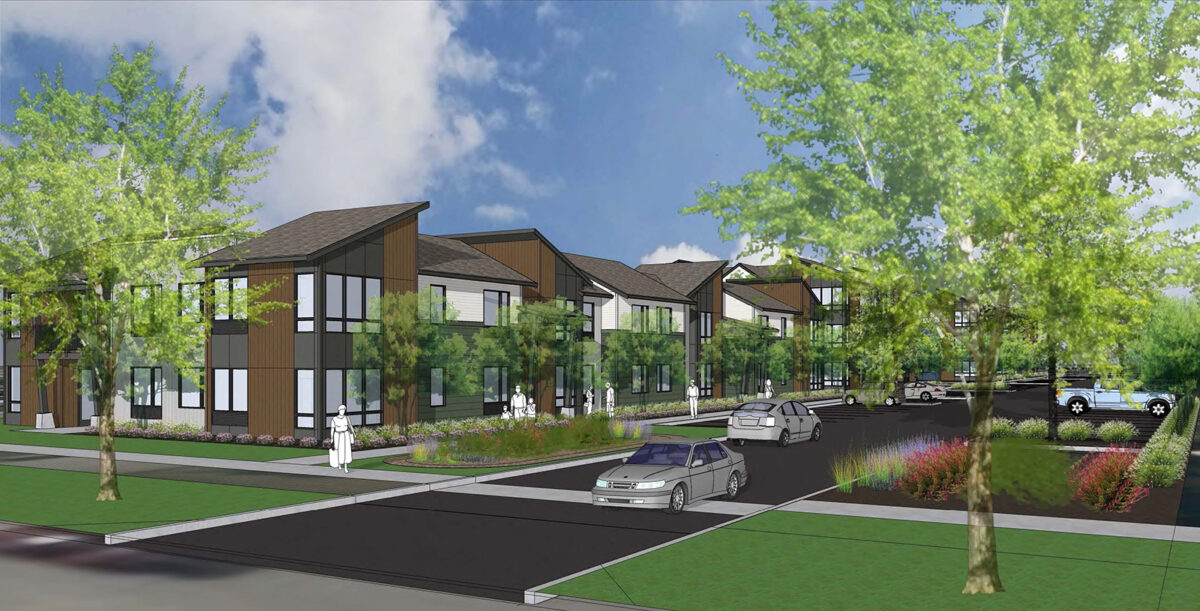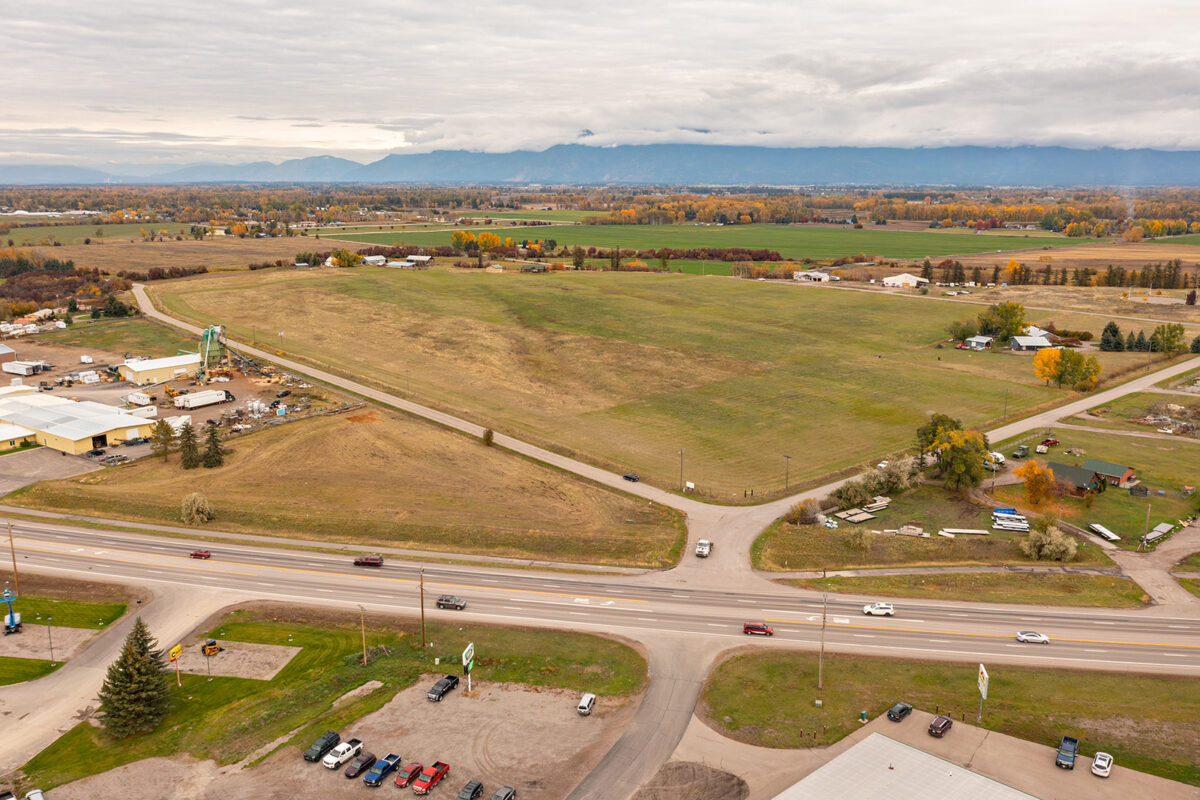Development Across the Flathead Valley Fluctuates Following Years of Rapid Growth
While home costs remain high across northwest Montana, Kalispell, Whitefish and Columbia Falls are experiencing unique housing trends as Flathead County officials work to move forward on infrastructure projects in 2025
By Maggie Dresser
As development plateaus following years of dramatic growth and housing prices remain high, the Flathead Valley is chugging along with steady building and long-term infrastructure upgrades, gaining momentum that is projected to continue in 2025.
In Kalispell, planned housing units are slowly declining from the peak of 878 in 2021 to about 250 units in 2024. Last year, the municipality saw 577 units while there were 244 units in 2019.
Kalispell’s Development Services Assistant Director PJ Sorensen says building permits remain historically high after smashing records in recent years and he attributes the drop to the high volume of multi-family apartments and continued construction.
“One reason they were so high was because there were a lot of apartments being built as opposed to single-family development,” Sorensen said, referring to the peak years. “It takes a lot more to get those numbers.”
Following years of planning, several developments are taking shape in Kalispell, like the Mountain View project located west of the Kalispell Bypass near the Foys Lake Road interchange. Approved in 2021, the subdivision was originally planned to bring in 225 single-family lots and 166 townhome lots along with 49 acres of open space and a 5-acre park. The area has been referred to as the “Kalispell scar” following a failed development years ago.
Sorensen said crews have begun home construction on 40 units while the second phase will bring 70 to the west.
North of town, phase four of the 200-unit Eagle Valley development is underway, and the North Town Center continues to make progress with the addition of hundreds of units. Sorensen also confirmed that Costco has submitted a building permit to the city, with plans to move from its current location off Old Reserve Drive to a property near the Ford dealership.
“A lot of the reason they are relocating is for parking, more space in the aisles and the checkout area,” Sorensen said.
Many projects are also seeing delays as costs rise and the construction industry continues to face challenges.
Last spring, the Kalispell City Council granted Compass Construction owner Bill Goldberg a five-year extension to begin construction on his $80 million development that will bring an eight-story parking garage and an 86,000-square-foot boutique hotel in the city’s downtown.
Councilors in 2022 approved the public-private partnership between the city and developers, which is slated to bring a 242-stall public parking garage with 78 multi-family housing units on the city-leased Eagles Lot, while the five-story Charles Hotel project will include 79 hotel units with a full-service restaurant. The development would generate significant tax revenue for the city using tax increment financing (TIF).
In Whitefish, City Manager Dana Smith said the municipality has seen a significant drop in single-family home permits in the last two years with 24 permits pulled. In 2021, there were 129 single-family permits with no multi-family permits issued.
Despite the drop in permits, Smith said two significant housing developments are underway, including a 210-unit project at the intersection of U.S. Highway 93 and Montana Highway 40 called Alpine 93/40. The development will encompass an 11-acre plot with 10% of homes planned to be deed restricted.
Additionally, the 146-unit Whitefish Corridor Community is slated for completion, which will bring in a mix of one- and two-bedroom apartments, 30% of which will be deed restricted. Developer Mick Ruis is spearheading the project that is located between Texas and Colorado avenues north of Edgewood Place on 7 acres.

“We anticipate those two projects coming forward in the next calendar year,” Smith said. “Overall, we are cautiously optimistic that Whitefish will continue to see infill and development. The industry has faced some challenges, and it depends on interest rates and the demand of our community.”
As mortgage rates continue to hover around 6.5%, Northwest Montana Association of REALTORS® (NMAR) Public Affairs Director Erica Wirtala said buyers and industry professionals are acclimating to high interest rates. But she said the lack of inventory in the Flathead Valley continues to keep home prices high on top of the high interest rate.
While prices remain unaffordable, market rates have fluctuated across the valley with November’s median home price in Kalispell at $522,750, Whitefish at $972,000 and Columbia Falls at $405,000, according to regional MLS data. This year, Columbia Falls had only $2 million worth of gross sales, a decline from previous years.
“Whitefish has plateaued, Columbia Falls has come down a smidge and Kalispell has come up while the county is steady,” Wirtala said.
Despite these expensive housing numbers, Flathead County commissioners have failed to accept $4.5 million in state funds through a homebuyer assistance program developed by the Montana Legislature to make workforce housing more attainable across the state.
The funding is part of a $50 million allocation that the Montana Legislature set aside in 2023 following the passage of House Bill 819, which was crafted to create more attainable workforce housing across the state. To manage the funding, lawmakers directed local housing nonprofits to establish Community Reinvestment Organizations (CRO) for the new homebuyer assistance programs. The CROs would then be tasked with matching the government’s share of the funding allocation, for a total of $9 million in homebuyer assistance.
Officials have until Dec. 31 to accept the funding, but the prospect is unlikely as commissioners Randy Brodehl and Pam Holmquist have failed to support the funding. Commissioner Brad Abell has expressed support for the program; however, a quorum of two commissioners is required to place the item on their agenda.

While commissioners are resistant to supporting the state-funded homebuyer assistance program, Flathead County Administrator Pete Melnick says they are “laser-focused” on constructing the new detention and public safety facility. A bond for the facility is planned to be on the ballot in the fall of 2025, which will allow voters to decide if residents want an expanded jail.
In October, commissioners selected an architecture firm to design the new facility on a 115-acre property in Lower Valley located at 255 Snowline Lane. The county purchased the plot for $3.9 million last year. The new detention center would have a 250-bed capacity.
“If you look at the justice ecosystem, we have a new fifth district court judge, we have a fully staffed attorney’s office, the sheriff’s office is fully staffed and the Kalispell Police Department is growing,” Melnick said. “The only entity in that ecosystem that needs additional support is the detention facility.”
Additionally, the county is also preparing for a permit approval for the Lakeside Water and Sewer District that would allow the discharge of treated wastewater to ground water at new septic facilities in Somers.

The Montana Ground Water Pollution Control System permit would allow the district to implement a new residential wastewater disposal system, moving away from septic to discharge treated water to groundwater through a rapid infiltration system.
The Department of Environmental Quality (DEQ) extended an open comment period through Jan. 10, 2025.
If approved, construction on the upgrades will begin next year and is expected to cost up to $30 million. The project’s first phase would be funded by federal and state grants and loans, costing roughly $13 million. More than $10 million will be provided through American Rescue Plan Act (ARPA) fiscal recovery funds along with dollars from the Western Montana Conservation Commission, and several DEQ loans.
“We’ve got a great partnership with Lakeside Water and Sewer District to build a regional septage fluid facility to help treat the 30,000 gallons of septage produced each day,” Melnick said.